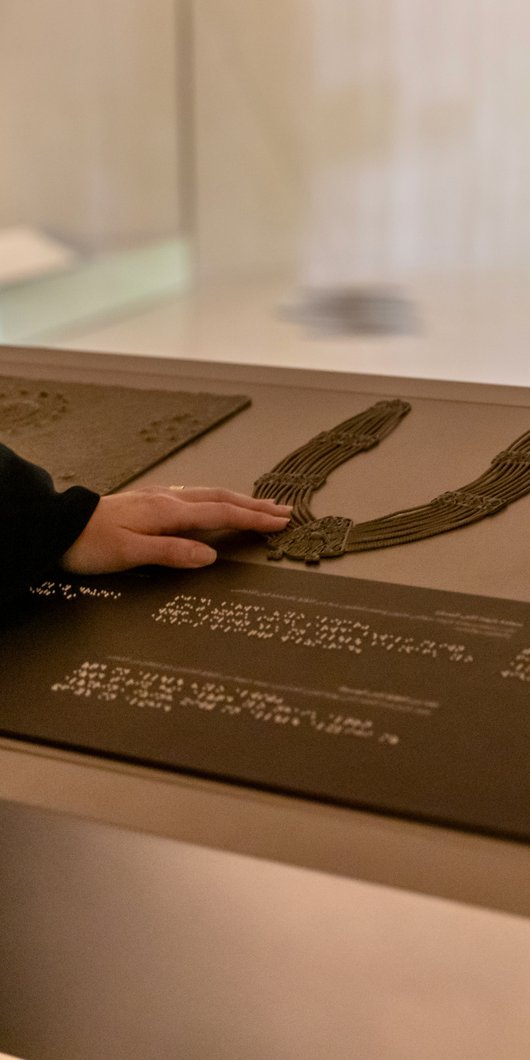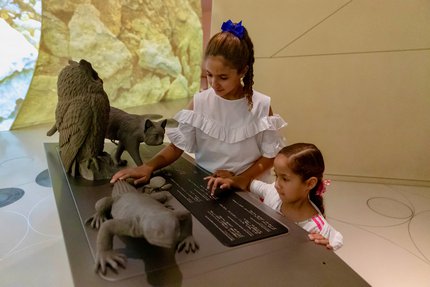The National Museum of Qatar (NMoQ) has been a leader in the field in its efforts to be inclusive and welcoming to all.
Accessibility Is Not One Thing
Being accessible and inclusive requires a multifaceted approach. For starters, NMoQ’s galleries have been evaluated by accessibility experts to ensure that exhibits and visitor paths are wheelchair accessible, labels and written materials are legible, and that any obstacles are addressed in order for the exhibits to be physically and intellectually accessible. The museum also ensures that it complies with the nationally adopted accessibility code, The Singapore Construction Code, as well as other internationally recognised standards and best practices such as the Smithsonian Standards and Guidelines, and the Americans with Disabilities Act.
NMoQ’s efforts in making the museum accessible are also evident through a range of assistive devices that are made available to visitors, including:
C Pen Reader
A scanning pen device designed for productivity and learning, the pen assists people with reading difficulties by reading the scanned text aloud to the user. Visitors simply need to pass the nib of the pen across the text in order to activate the audio assistance feature.
Portable Induction Loop
The system helps amplify sound for visitors with low hearing. The induction loop reduces or completely drowns out background noise and picks up certain sounds according to people's hearing needs.
Ubiduo
A mini-keyboard that enables visitors who are Deaf to connect through real-time text-based communication with two or more individuals.
Reading Machine
Similar to a pen reader, the self-contained machine reads text out loud by scanning written text.
Handheld Magnifier
For visitors with low vision, the magnifier can be used to read the displayed text, focus on artifacts or details of an object.
In addition to the devices listed above, NMoQ’s immersive galleries utilise innovative storytelling approaches that incorporate music, oral history, film and archival footage, accompanied by a range of scents such as coffee, bukhoor, and the sea to give visitors an integrated lifelike experience. The Museum’s five multisensory tactile stations provide descriptions of some of the master objects in braille, covering themes of geology, natural environments, archaeology, life in the desert, and celebrations; all accompanied by a range of 3D models. Furthermore, the family exhibits, programmes and tours are designed to engage caregivers and children of all ages and abilities.
Internally, NMoQ promotes accessibility by offering accessibility awareness training to staff in partnership with the Accessible Qatar Initiative.
Committed to making accessibility a top priority, NMoQ will continue to employ new methods of creating an inclusive space where everyone can access and enjoy the museum’s offerings.

